Three Tough and Terrific Trees
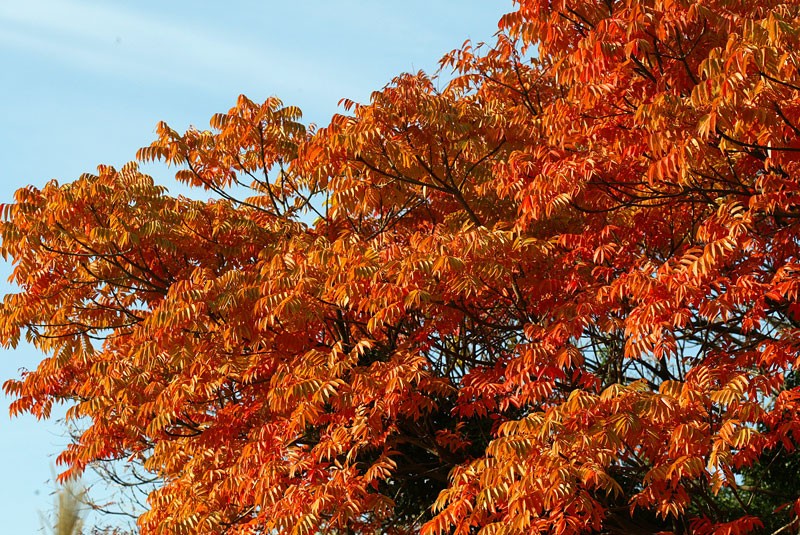
By Paul James
Here in our neck of the woods, we have dozens of great trees to choose from, both deciduous and evergreen. But there are three in particular that are as close to foolproof as you can get because they tolerate an incredibly wide range of soil conditions, are relatively pest and disease free, and are tough as nails. Oh and on top of all that, they’re beautiful.
First up is the Chinese Pistache (pictured above). Yes, it’s related to the tree that produces pistachio nuts, but unfortunately this one doesn’t produce those tasty treats. (Darn!) Chinese Pistache grows at a medium clip, and typically tops out at around 25-feet high and wide. It can get taller – up to 40 feet or more – but that’s the exception. Both male and female trees produce green panicles of flowers; females also produce small, inedible fruits that ripen in fall. Dark green leaves turn shades of yellow, orange, and red in fall, and as it matures, its gray-brown bark often peels away to reveal a salmon-colored inner bark.
Although it’s native to China, Taiwan, and the Philippines, this tree loves Oklahoma. In fact, I wouldn’t be surprised if it naturalizes here some day.
Next is the Shumard Oak, one of the best red oaks ever for Green Country. It’s a pretty fast grower when young, and generally grows to about 40-feet tall. Given plenty of room, it can ultimately reach 60, even 80 feet or more. It maintains a pyramidal shape for many years, then spreads to form a broad, open crown. Its shiny, dark green leaves turn a reddish orange in fall. This tree is native to our area, in particular moist locations in low spots and along streams, lakes, and swamps. Thankfully, however, it adapts quite nicely to dry sites.
And last but hardly least is the Lacebark Elm. Another Chinese native that is perfectly at home in Oklahoma, this baby will grow to about 40 to 50 feet in as many years, but generally hovers around 25 to 30 feet in most landscapes. It’s a quick grower with small green leaves that turn yellow in fall. My favorite feature of this tree is its exfoliating or peeling bark, which flakes to reveal patches of gray, cream, orange, and brown.
Of course, there are lots of other trees to choose from, and I’ll feature three lesser-known choices next week. In the meantime, remember: If you’ve been contemplating a new tree on your property, the time to plant is now.
The Secret to Successful Gardening
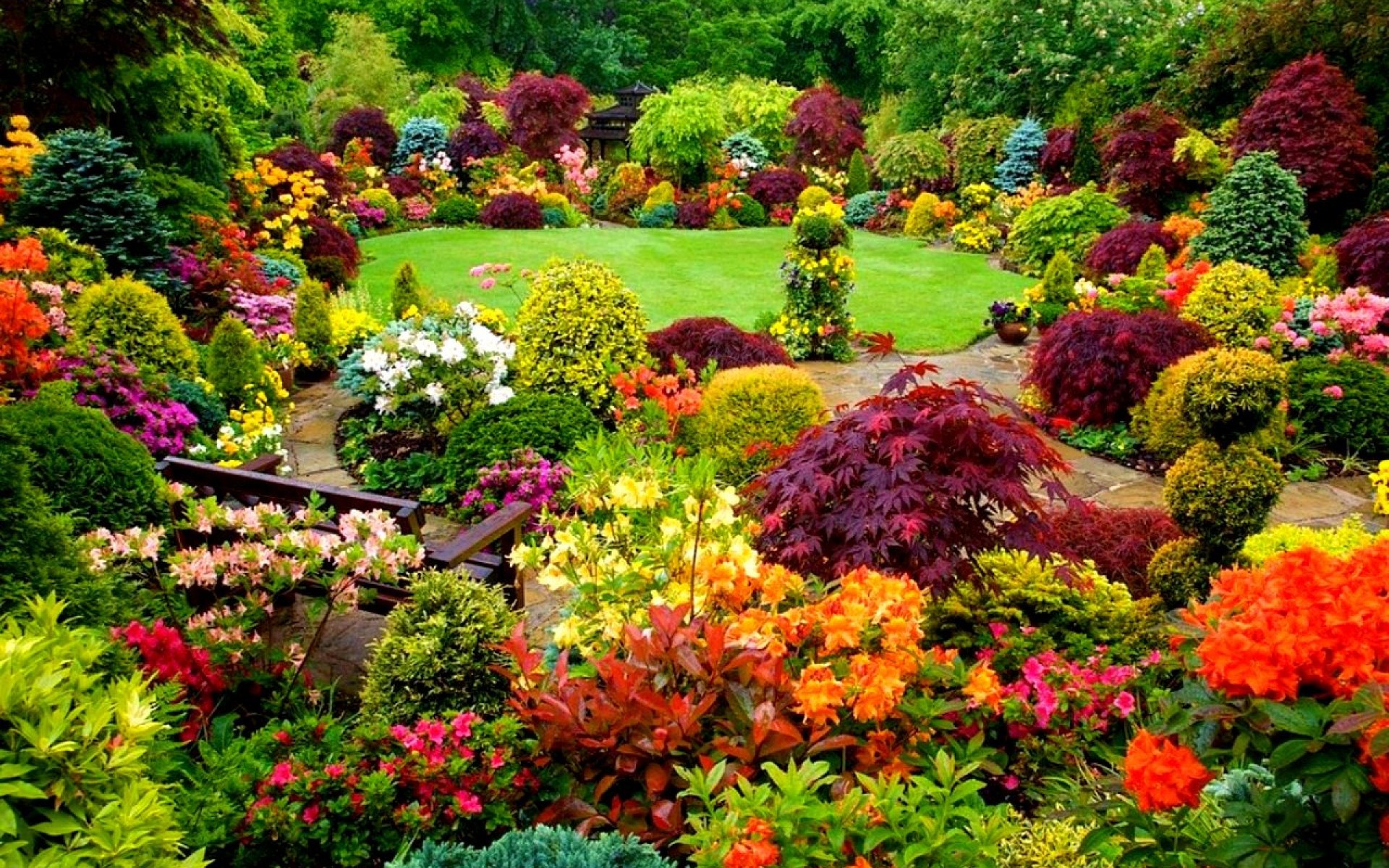
By Paul James
Imagine being able to add something to your garden that makes plants far less susceptible to insects and diseases, provides essential nutrients and micronutrients, improves soil structure and water retention, activates beneficial soil microbes, and basically provides the perfect growing conditions for anything and everything you grow. Now imagine that “something” is free.
I’m talking about compost, the secret to successful gardening if ever there was one. And I can say with absolute certainty that if you’ll routinely add compost to your trees, shrubs, annuals, perennials, vegetables – even plants in containers – you’ll discover a real difference in the health of your plants. You’ll discover that you can grow plants with less fertilizer — because compost is the perfect food for plants — and fewer pesticides — because genuinely healthy plants have the ability to resist pests and diseases. You’ll discover that even heavy, compacted soils become lighter and looser. You’ll discover that you’ll water less often. And you’ll discover that your once sterile soil is teaming with all sorts of critters, especially earthworms.
Still not convinced? Then take a walk in the woods. Notice how healthy everything is, from the trees above to the shrubs and thickets below to the grasses and flowers on the forest floor. Then notice the accumulation of leaf litter and other organic matter on the ground. That’s compost, plain and simple. And that’s nature’s way of keeping everything in perfect harmony.
You can mimic nature’s way by purchasing composted products or by starting a compost pile at home. And to learn how to do just that, join me this Saturday morning at 10:00 for a free seminar titled “Compost is King.” Please register in the Events tab.
Bulbs- Get ‘Em in the Ground!
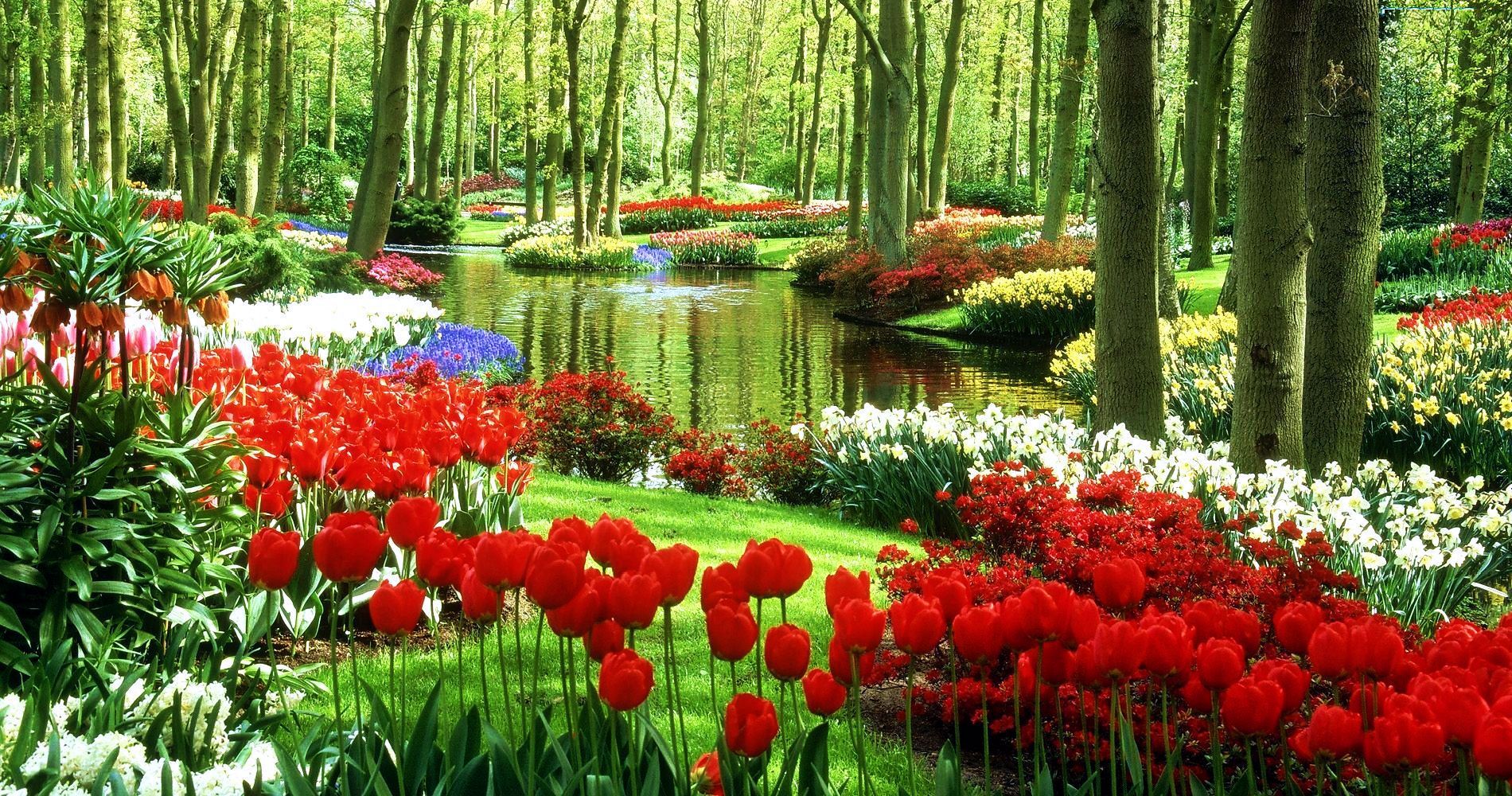
By Paul James
Yeah, you read that right. It’s time to plant spring-flowering bulbs. There’s really no point in waiting any longer. And there’s really no point in planting some now and some later. Why not just get the job done in one fell swoop?
And besides, if you’re going to mix bulbs in the same planting area – which is a great way to grow them – then why would you want to plant daffodils now and tulips or hyacinths or whatever two weeks from now? It doesn’t make sense. And the truth of the matter is the bulbs will be better off in the ground than sitting in your garage or on a store shelf.
According to every source I’ve contacted – from Piet Stuifbergen of Stuifbergen Bloembollen Export (Southwood’s exclusive supplier of bulbs) to the people at The Netherlands Flower Bulb Centre to our friends at OSU, the time to plant is now. And you can continue planting until the ground freezes, which may be November and might even be December.
So, sound the alarm. Tell your friends and neighbors. The time to plant bulbs is now. Or this weekend, anyway.
It’s Planting Time!

By Paul James
Every year for the past 25 years or more, I’ve tried to convince my friends and fellow gardeners that now is the perfect time to plant all kinds of things. So here I go again. But to be clear, I’m not talking about things that most folks know to plant in fall – mums, pansies, asters, ornamental kale and cabbage, cool-season veggies, fescue and rye grasses, spring-flowering bulbs – the stuff that practically defines fall planting. I’m talking about practically everything else, in particular trees, shrubs, and perennials.
The reason I’ve harped on the subject for so long is that I’ve witnessed firsthand for decades the enormous difference fall planting makes. Allow me to explain by getting to the root (or rather, roots) of the matter.
Planting in the fall gives roots a chance to grow quickly, because the plant isn’t forced to devote near as much energy toward producing foliage or flowers or fruit as it is in spring. Instead, it devotes nearly all of its energy into producing roots, a process that continues for weeks, even months. The reverse is generally true in the spring – a plant’s energy is devoted to new top growth at the expense of root growth.
Consequently, what you plant in fall will be far more prepared for the surge of new growth in spring, and be far better equipped to handle the heat of summer, thanks to its larger root mass. And fall planting greatly reduces the chance of transplant shock, largely because air temperatures are cooler and rainfall is more dependable.
Don’t get me wrong: I’m not saying you shouldn’t plant trees, shrubs, and perennials in spring. But I am saying that given a choice, I’d opt to plant the vast majority of plants from those categories in fall. And so should you.
Yes, I’m Conifer Crazy!

By Paul James
This isn’t the first time I’ve written about conifers, and it won’t be the last. My love affair with this amazing plant group began many years ago with a visit to Rich’s Foxwillow Pines Nursery in Woodstock, Illinois. Owner Rich Eyres took me on a tour of his place, and as he described the plants in his considerable (as in $12-million) inventory, his passion oozed like sap from a fresh-cut spruce. That passion has stuck with me ever since, and to this day that tour ranks as the most memorable of all my gardening experiences.
When I got back to Tulsa, I immediately set out to find as many conifers as I could, but was dismayed to discover that the choices at the time were limited. Sure, there were a few species of pine available, as well as some junipers and a spruce or two, but the more interesting and unusual selections I’d seen at Rich’s place were nowhere to be found.
Thankfully, however, all that has changed in recent years. Now you can find outstanding selections in a broad range of sizes, shapes, and colors. Common to this area are a number of excellent cedars, junipers, pines and spruces, all of which do well in Green Country. But here are some of my less familiar favorites that you really should consider.
Cedrus: There are only three species in the true cedar family – the Atlantic cedar, the Deodar cedar, and the cedar of Lebanon. Truth is, you can’t go wrong with any of them. Perhaps my favorite of the lot is the Deodar known as ‘Feelin’ Blue.’ It reaches a height of only three feet, but spreads to around five or six feet. There’s also a yellow equivalent called ‘Feelin Sunny.’ All cedars can handle full sun.
Cryptomeria: Sometimes called Japanese cedar (even though it isn’t), this is the most revered tree in Japan, where you’ll find it planted near shrines and temples, as well as in huge swaths of forest. ‘Black Dragon’ is an outstanding upright form, and ‘Globosa Nana’ is an excellent mounded shrub form. Both grow well here so long as they’re planted in a spot that gets afternoon shade.
Chamaecyparis: Also known as false cypress, this genus includes dozens of great choices, although my favorites are the Hinoki cypresses. They too are available in upright and shrub forms, as well as true dwarfs, such as the magnificent, golden-tinged ‘Verdoni.’ I’m also keen on the large and graceful weeping ‘Alaskan Cedar’ (which isn’t a cedar either). And then there’s ‘Fernspray’ (in green and gold), which is truly gorgeous. Again, afternoon shade is preferred.
Picea: The spruce family is vast, and while many are familiar with the blue forms, I’m actually partial to the green ones. I love the weepers, although I must admit a new upright form called ‘Hillside Upright’ has grabbed my attention, and is destined for a spot in my yard. Its lateral branches grow somewhat sparsely up the main trunk, so it’s easy to see through, unlike most spruces. A cool round form that produces oodles of cones is the relatively new ‘Pusch.’ Spruces love the sun.
Pinus: Oh, the pines. If I had to pick only one conifer, it would likely be a pine. The odd-shaped ‘Uncle Fogy’ is one of my favorites, although I’m guessing it’s not for everybody. The weeping white pines are spectacular as well. A new, round form of white pine called ‘Billow’ is gorgeous, and a new mugo named ‘Jakobsen’ is beyond beautiful. It looks like a ready-made bonsai. But if you’ve got room for a 20-foot tree form, check out the yellow-needled ‘Louie.’ It’s drop-dead gorgeous, and it holds its yellow color year round. Generally speaking, pines prefer full sun, but a bit of afternoon shade won’t hurt.
Last but not least, there are dozens of incredible miniature conifers available that look dynamite in the ground or in containers. And many of them make excellent starter bonsais.
I could easily rattle off more choices, but I’m hoping these will spark your curiosity. Fair warning, however: You may become as addicted to conifers as I have, but then that’s hardly a bad thing.
Bulb Planting Tips and Tricks

by Paul James
Bulb Planting Tips & Tricks
This Saturday morning at 10:00, none other than Piet Stuifbergen of Holland-based exporter Stuifbergen Bloembollen will be at Southwood to share his vast knowledge of bulbs with us. I don’t pretend to know what Piet knows, but I have successfully planted thousands of bulbs over the years, so I thought I’d give you a brief primer on bulb planting in advance, including a few of my favorite tips and tricks. First, the basics.
Spring-flowering bulbs arrive in stores (Southwood included) several weeks before the ideal planting time. That’s just the nature of the business, and has been for as long as I can remember. Consequently, it pays to shop early to ensure the best selection. The bulbs will be fine for several weeks if stored in the garage or other cool, dark spot.
Planting time varies from year to year, although typically it begins in October or, as a general rule of thumb, six weeks before the first hard freeze. Another suggestion is to simply wait until overnight temps are consistently in the 50s. I’ve planted as early as late September and as late as Thanksgiving in years past and achieved excellent results.
First and foremost, realize that bulbs don’t like wet feet, so make sure the planting area you have in mind drains well. Adding soil amendments won’t hurt, but it’s not always necessary. Plant large bulbs approximately eight-inches deep and small bulbs roughly five-inches deep. Always plant the pointed end up. If there’s no clearly defined pointed end, plant the bulb on its side and it’ll figure out which way to grow.
You can fertilize at planting time, but all the nutrients needed for growth are contained in the bulb itself. Fertilization is more important when early spring growth begins to emerge. After planting, water well, and give yourself a pat on the back.
In terms of where and how to plant, the possibilities are endless. However, here are some of my favorite approaches, beginning with companion plantings.
One of my favorite companion-planting techniques is to combine daffodils with daylilies. The daffodils come up first, then as the daylilies begin to grow, their foliage hides the fading daffodil foliage. And you get continuous blooms from both for weeks on end.
I also like the look of daffodils or tulips mixed with pansies, which results in a dazzling spring display.
What I don’t care for are bulbs planting in straight rows like soldiers on parade. Instead, I prefer swaths of several dozen bulbs. If you layer the planting area with tall bulbs in the back and short ones in front, you get a beautiful, cascading effect. And if you plant early-, mid-, and late-blooming varieties, you get weeks and weeks of eye-popping color.
Without question, my favorite look is the naturalized planting, and the best way to achieve that look is to place a few dozen mixed bulbs in a bag or bucket, toss them in the yard or garden bed, and plant them where they fall. It works great, and it’s pretty much foolproof. Give it a try.
I’ll see you Saturday morning.
Wascally Wabbits!
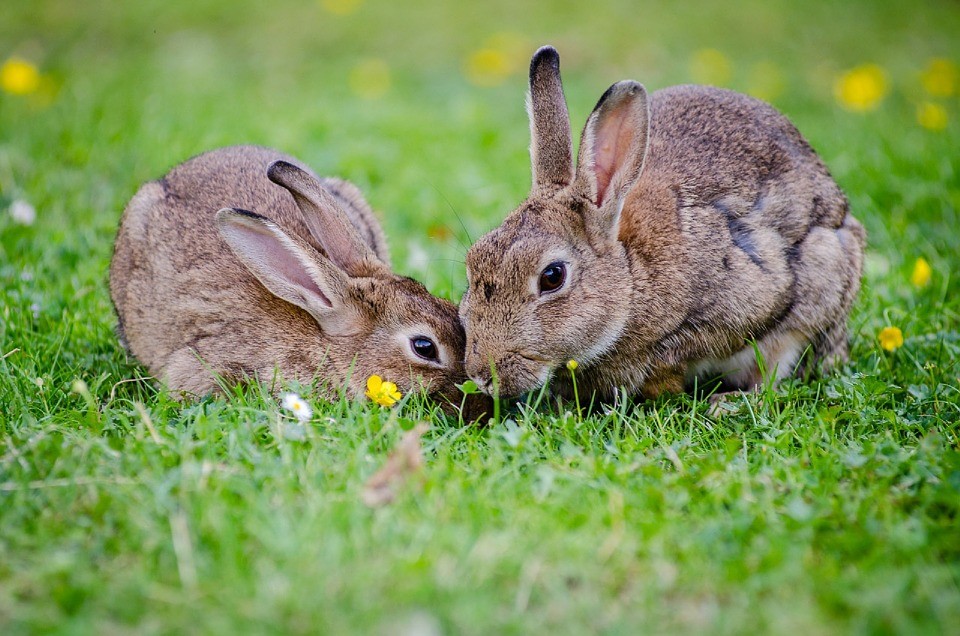
by Paul James
I moved into my current home just over four years ago, and from day one I’ve dealt with rabbits ravaging my vegetable gardens. I actually made the situation worse by building fences to keep my three dogs out of the gardens, which basically created safe havens for the rabbits (and squirrels, but that’s another story).
I’ve contributed to the problem in other ways – a pallet of stones that I bought a while back but haven’t figured out what to do with, and several hay bales that I buy every year and allow to rot for months before applying to the gardens as mulch. Both are ideal habitats for rabbits. And I have a deck and storage building that rabbits burrow beneath to nest. I routinely seal the openings, but invariably they create new ones elsewhere, or my beagle creates new ones for them as he relentlessly but futilely tries to get at them.
I’ve used various repellent products, which offer limited control and must be reapplied often. I’ve tried fake owls, which must be moved every day, and even then don’t seem to work more than a few weeks. I’ve tried blood meal with some success, but you can only apply so much pure nitrogen to plants. I’ve tried coyote urine, manure from zoo animals, dog hair from the groomer, shavings of Irish Spring soap, dustings of cayenne pepper and homemade garlic sprays, all with mixed results. I have had some success by planting white clover in my lawns as a trap crop. Rabbits love clover, but they also like a diverse diet, one that includes lettuce and spinach and just about everything else I grow (although they don’t like mustard greens – yippee!).
And that’s the way it is with nearly all rabbit controls, whether store bought or homemade: They definitely work, but they don’t work indefinitely.
(My wife says we need a cat to roam free in the backyard, but I’m allergic to cats, and my numerous raised beds would serve as nothing more than gigantic litter boxes.)
If you scour The Google for ideas, you’ll ultimately discover that the only tried and true way to keep rabbits out of the garden is to fence them out. But not just any fence will do. Ideally, it should be made of ¼-inch galvanized mesh screening, should be at least two-feet tall, and should be buried below ground at least six inches. Great. So how am I supposed to work in my garden beds when they’re wrapped in fencing?
I’ve spent decades giving advice to fellow gardeners. Now I need advice from you. If you’ve discovered a way to keep rabbits out of the garden (other than using products made by Winchester or Remington), please tell me about it. And hurry. My fall veggies are germinating, and the young seedlings are an enticing smorgasbord to all the wascally wabbits that call my home their home.
Plant More Bulbs!
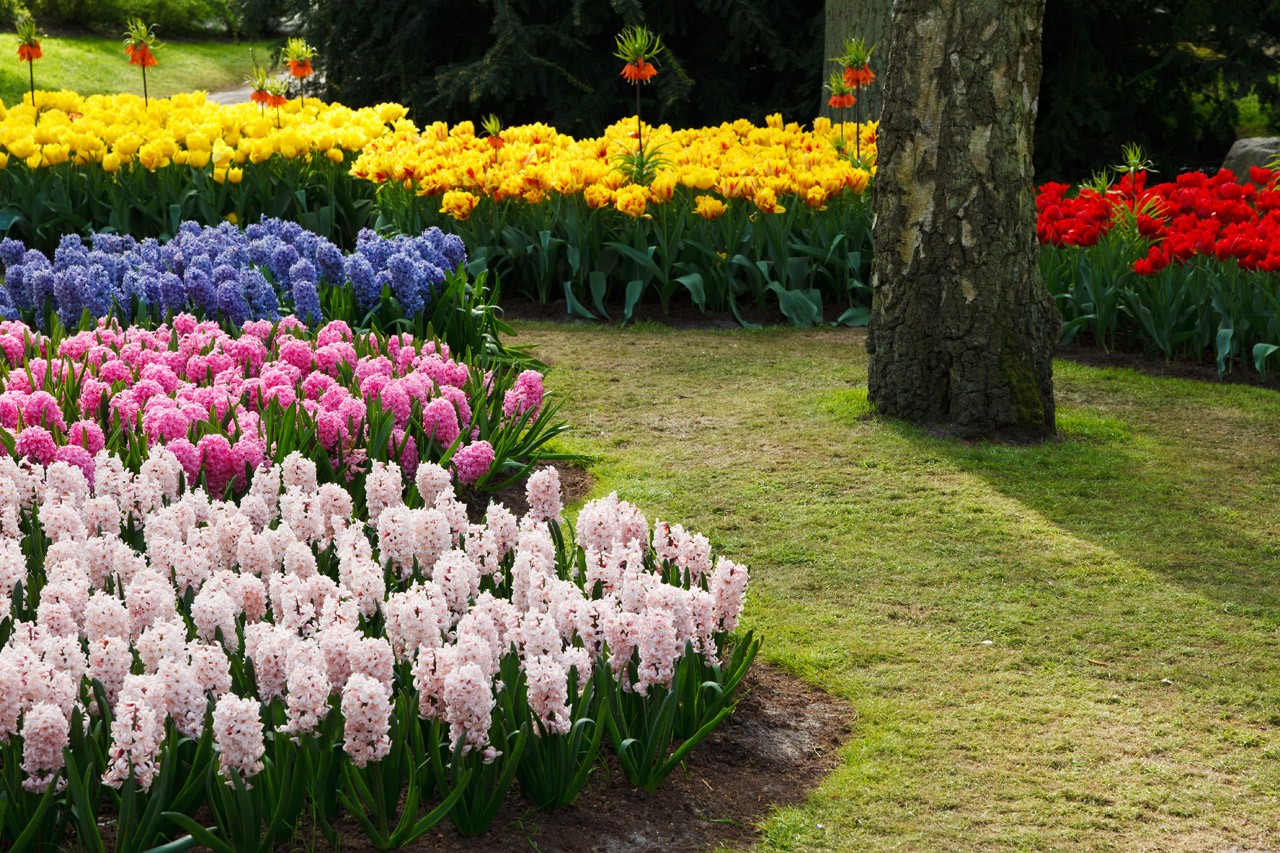
by Paul James
Sales of spring-flowering bulbs – tulips, daffodils, hyacinths, and more – have been declining nationwide in recent years, and I can’t for the life of me understand why. After all, we’re talking about gorgeous flowers that are easy to plant, even easier to care for, in most cases come back year after year, and cost precious little coin. Why then, aren’t more and more people taking advantage of the many attributes of bulbs?
Is it because aging gardeners (a group I’m now a member of) think that planting bulbs is too difficult? Perhaps. But c’mon, preparing a planting hole with a bulb planter or trowel is pretty simple, and even simpler with a bulb-planting auger attached to a drill.
Is it because homeowners think bulbs require too much maintenance? Maybe. But bulbs are about as maintenance free as any plant could possibly be. Fertilize them just as green growth begins to emerge, and water them during dry spells. That’s about all there is to it.
Is it because the price of bulbs seems high? That’s hard to imagine. Bulbs are a bargain, the best bargain in the entire world of plants. Think about it. A dozen daffodils retails for less than ten bucks. That’s less than the price of many one-gallon perennials. And instead of one plant you get 12. In two years, those 12 become might become 24, in three years 36, and so on.
Is it because bulbs have lost their appeal? Not a chance. Bulb festivals in New York, Michigan, Utah, Iowa, Kansas, the Pacific Northwest, and elsewhere continue to draw huge crowds.
So why have bulbs sales been declining? Well, I’m convinced the reason is rather simple: people just forget when to plant them. Bulbs require a chilling period in the ground, which means they must be planted in October through November, a time when most folks – even many diehard gardeners – have put their gardens to bed and called it quits until spring.
Those are the same people I hear complaining every spring – as they walk through their neighborhood or stroll through a park — about how they missed the opportunity to plant bulbs in their own gardens the previous year. Don’t be one of those people. Mark your calendar now for October 15, and make it a point this fall to plant more bulbs. Lots and lots of bulbs.
Talkin’ Turf
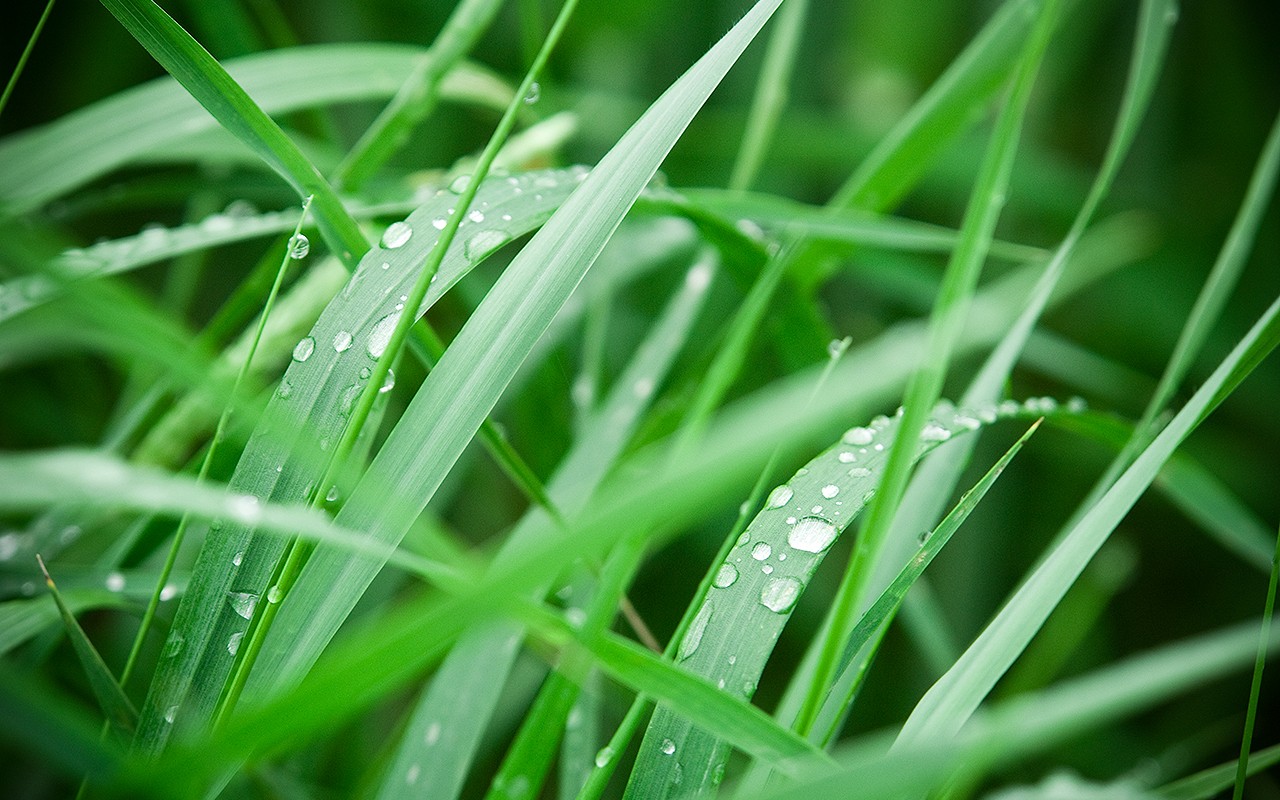
by Paul James
Fall in Green Country means cooler temperatures, more dependable rainfall, fewer pest and disease problems… and lots of stuff to do in the garden! In the next few weeks I’ll be looking at the most important fall gardening topics and presenting timelines for what to do and when. This week my focus is on lawn care.
Seeding time for cool-season grasses such as fescue and rye is just around the corner, ideally when overnight temperatures are in the 60s or cooler and the mid-80s or cooler during the day. You can certainly plant earlier, but chances are you’ll have to water more if rainfall is scare. Regardless, you should plan on sowing five pounds of seed per thousand square feet in an existing lawn, and twice that rate on bare surfaces. Scratching the soil surface with a metal rake to create shallow furrows helps to ensure good seed-to-soil contact, but in an existing lawn you can just let the seeds fall where they may.
The only real trick to getting seed to germinate is even and consistent moisture. You don’t need to water a lot, but you do need to water often so that the seed and the top quarter inch of soil stay moist. Typically, that means watering briefly twice a day. Both fescue and rye ordinarily germinate within seven days if they receive adequate moisture.
Fall — as in now through the first or second week in October — is also a good time to deal with weed control in the lawn, but realize that you can’t use certain weed-control products – namely those known as pre-emergent herbicides —and sow grass seed at the same time. Pre-emergent herbicides, by definition, prevent seeds from germinating, and they don’t distinguish between grass seed and chickweed seed.
And finally, fall – as in now through mid to late September — is the ideal time to fertilize turf grasses of all types. In fact, if you can only afford to fertilize once a year, fall is your best bet. Turf grasses have the ability to take up the nutrients in fertilizers, convert them to carbohydrates, and store the carbs over the winter. The following spring, they use those carbs to kick growth into high gear.
Next week I’ll focus on a group of plants that give you the biggest bang for your buck – spring-flowering bulbs.
“The Most Important Time Spent in the Garden is the Time Spent Not Gardening”
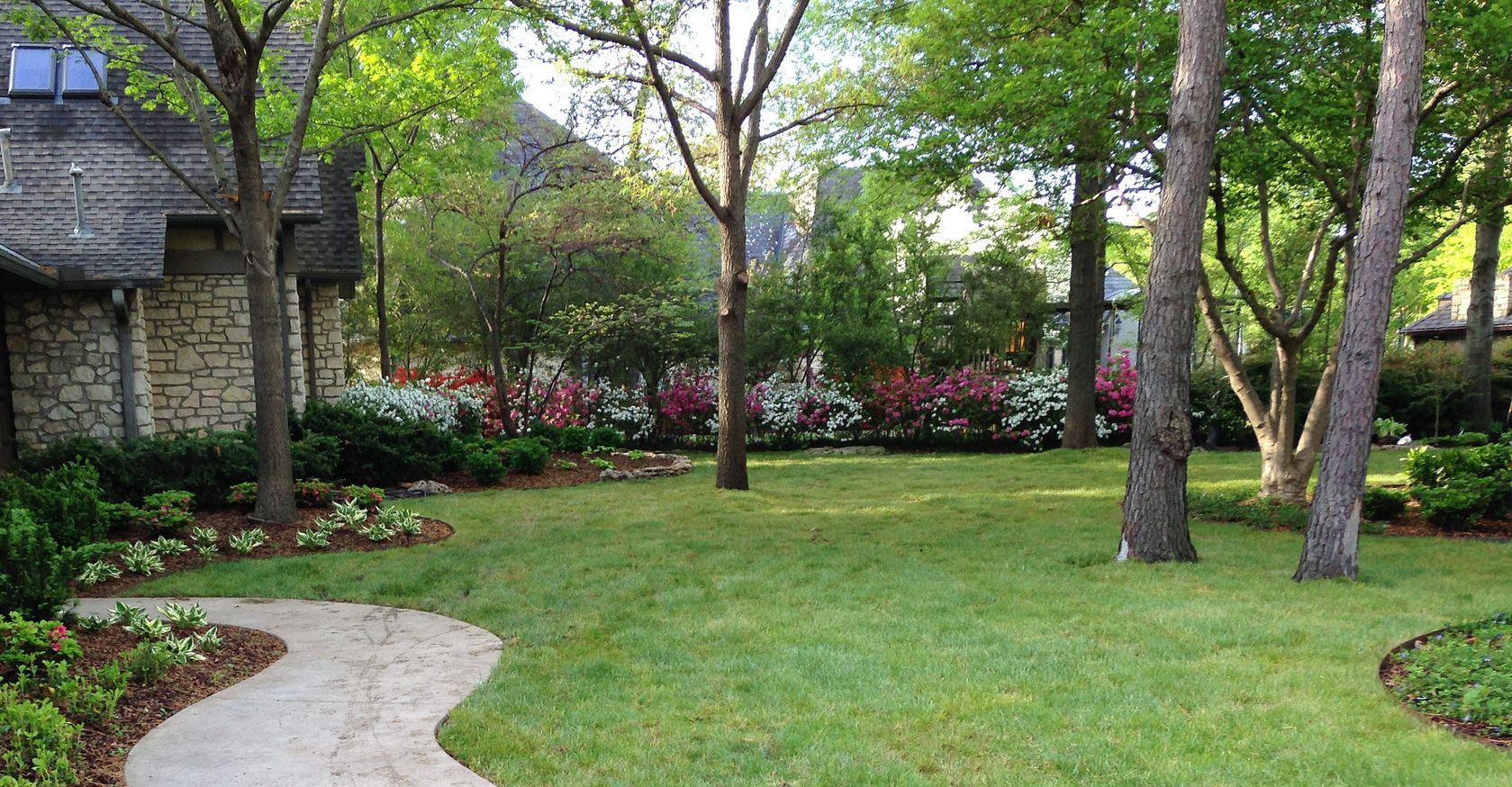
by Paul James
The quote above is my own. And while it may not pass for profundity, it captures the essence of what I think is the most important lesson I’ve learned in 40 years of success and failure as a gardener.
Naturally, I’m not suggesting for a moment that you don’t garden. What I am suggesting is that you spend time in the garden now and then doing nothing more than observing. No pruners. No trowel. No watering wand. Just you (and perhaps a beverage) strolling through the garden and paying close attention to the wonders that surround you.
Try it for the first time early in the morning. As you stroll, deliberately change your perspective. Look at plants from the top down, from the side, and from the bottom up. Examine the undersides of their leaves, and be prepared to be startled by critters that like to hide there.
Feel the textures of leaves and stems. Crush them and smell them. Do likewise with flowers. And yes, even weeds.
Flip over rocks to see who and what’s hiding under them. Scratch the soil surface and see what lies an inch below. Pull up a plant that’s seen better days and pay close attention to its root system.
Then try it again at night, ideally when the moon is full, and get ready to witness a whole new world, one that can be as different as, well, day and night.
Do those things and chances are you’ll never see your garden in the same way again, and you’ll begin to understand the interconnectedness of all the living things that call your garden home. But most importantly, you’ll begin to develop a genuine kinship with the world around you. And that’s time well spent.
Plant a Fall Veggie Garden!
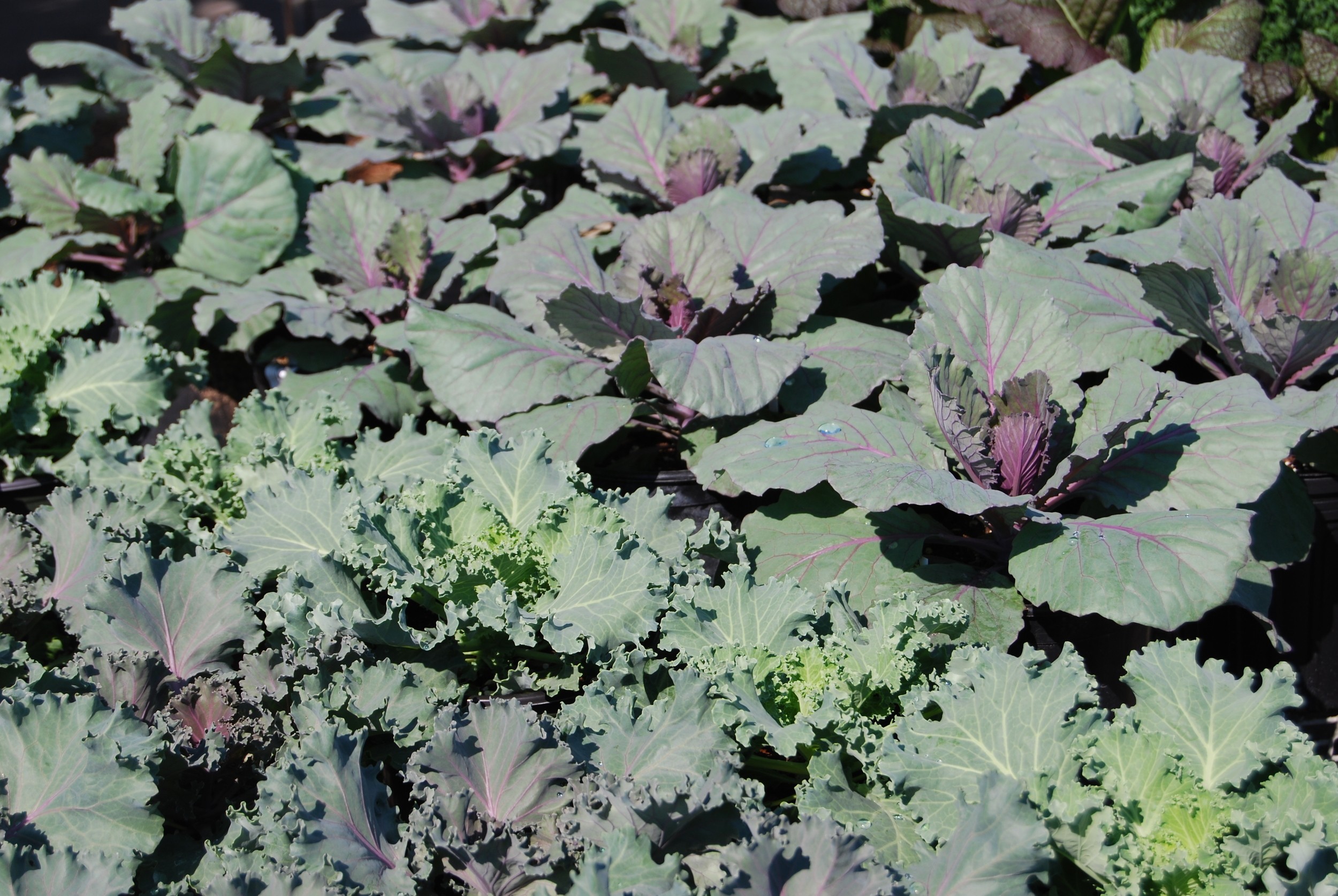
by Paul James
If I had only one season in which to plant a vegetable garden, it would be fall. No doubt about it. And the reason is simple: vegetables harvested in the fall taste better. No doubt about that either.
And just what will I be planting? Well pretty much everything I plant every spring, with the exception of asparagus, and that’s a long list, one that I now present in alphabetical order, with an asterisk indicating those that I plant as transplants. All others I direct sow in the garden from seed.
Arugula
Beets
*Broccoli
*Brussel Sprouts
* Cabbage
Carrots
*Cauliflower
Collards
Kale
Kohlrabi
Lettuce
Mustard Greens
Onions
Potatoes
Spinach
Swiss Chard
Radishes
Turnips
Planting veggies in the fall is a tad tricky, because everything on my list is a cool-season crop, yet it’s anything but cool this time of year. And it’s not just the air temperature that presents a problem – it’s the soil temp as well. So here’s what you need to do to ensure a successful fall planting.
1. Wait until at least the middle of August to plant, and make successive sowings into mid-September.
2. Plant seeds and transplants late in the day, so they aren’t subjected to the hot sun immediately after planting, or wait for an overcast day to plant.
3. Plant seeds roughly twice as deep as you would in spring (check the seed packet for planting depth). It may take them longer to germinate, but they’ll be fine.
4. Water every morning and again every night to keep the seeds as cool as possible. (And if you can, run home at lunch and water some more.)Water just enough to keep the top inch or so of soil moist and cool. If you’ve got a drip irrigation system, good for you. Follow the same schedule.
5. Spread a light layer of mulch over the planting area to conserve moisture. Grass clippings work great, as do hay or compost.
6. As seeds begin to germinate, increase the amount of water, but continue to water both day and night until plants are established and temperatures begin to cool off a bit, then water only as needed.
Do all that, and you should have plenty of tasty veggies to enjoy for weeks on end. And don’t worry too much about frosts. Everything on my list is not only frost tolerant (down to about 27 degrees or so), but their flavor actually improves when they get nipped by frost (the plants produce more sugars in response to colder temperatures). In fact, I’ve harvested carrots and spinach and beets and kale on Christmas morning many a year, and that’s about as good a present as I could hope for.
Deadheading – Yay or Nay?
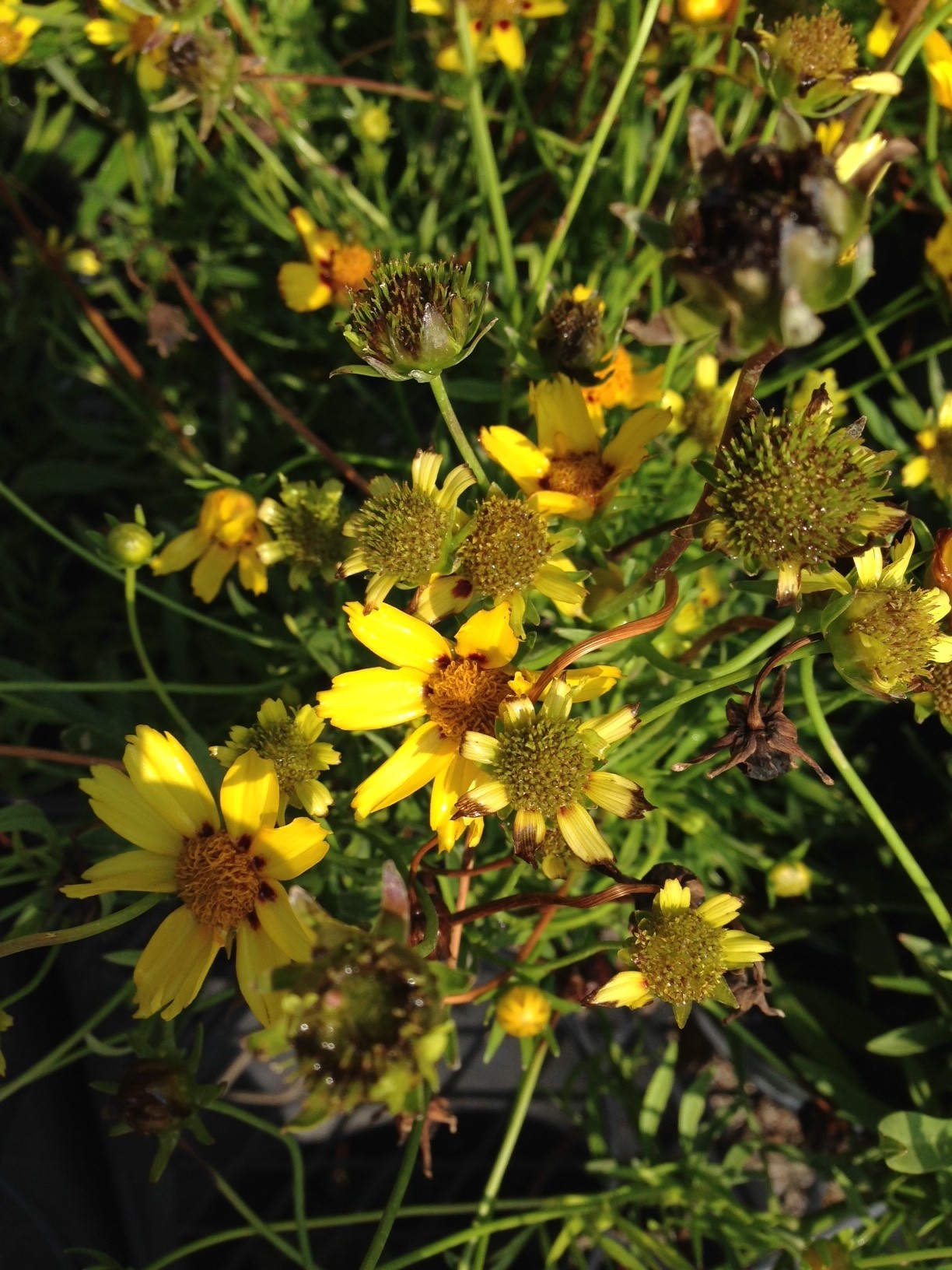
by Paul James
I’ll never forget the first time I heard the term deadheading. It was in the late 70s, and it curiously coincided with the moment I decided that the Grateful Dead was the most overrated band of the era.
Deadheading is the process of removing spent flowers. It’s not something you have to do, but in some cases it’s worth doing.
Many flowering plants will rebloom after deadheading. After all, the evolutionary goal of flowering plants is to set seed, so by deadheading you encourage those plants to produce even more flowers. Another reason to deadhead is to prevent plants that reproduce readily from seed from taking over your garden.
Now if you’ve got three or four Coreopsis, then deadheading two or three times during the growing season with pruners or scissors or a flick of the thumb is no big deal. But if you’ve got a few dozen plants, then you’ve got your work cut out for you.
So make no mistake – deadheading can be a tedious, if not downright daunting task, which is why plant breeders are developing so-called “self-cleaning” hybrids that don’t require deadheading, either because the foliage and new flowers hide the old ones, or because wind actually removes the flowers from the plant.
At the end of the day, the decision to deadhead comes down to whether you’re a neat freak or not. If you like things orderly, manicured, and maintained, then by all means deadhead all you want. But if you think neatness is overrated, feel free to skip the process altogether. And by not deadheading, you can take heart in knowing that your garden will become a haven for songbirds that’ll quickly devour the seeds left on your plants.
What Not to Do in the Garden
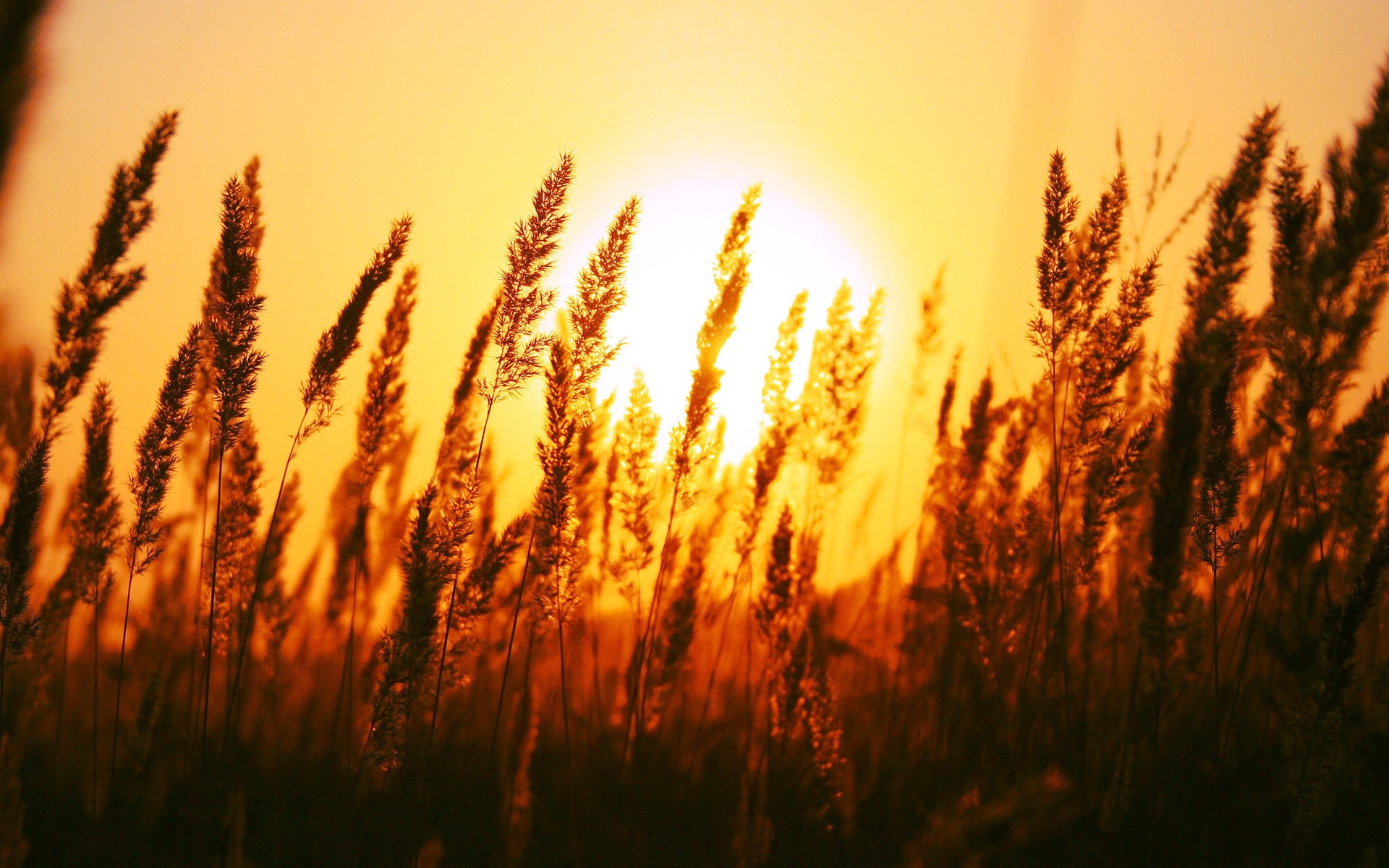
by Paul James
Given the dome of heat and humidity that seems to have perched directly on top of us – and with little if any relief in sight — I thought now would be a good time to remind you what not to do in the garden. Here it goes.
Don’t spray with oil-based products in the middle of the day. This includes horticultural oil and Neem oil. Although they’re great, all-natural pesticides/fungicides, they can be phytotoxic, meaning they can burn leaves, especially when temps are in the 90s. Instead, apply oil-based products after sundown.
Don’t cut your grass too short. The height of your turf is roughly equivalent to the depth of its roots, and this time of year you want the deepest roots possible. So raise the height of your mower at least one notch, regardless of the type of turf you grow.
Don’t allow water to stand in pot saucers, or anywhere else for that matter. It’s mosquito season, after all, and those little buzzers need only a thimble full of water to lay their eggs.
Don’t apply fertilizer too aggressively. Feeding plants when it’s this hot forces them to grow at a time when they’d rather take a break. If you feel you must fertilize, use half the amount recommended on the package. Otherwise, wait another month or so.
Don’t plant large trees or shrubs this time of year. The odds of them surviving aren’t good at all, so better to wait until things cool off a bit.
Don’t overdo it. Take frequent breaks, drink lots of water, and try to get your gardening chores done early in the morning.
Paul James Chats with Southwood Farm Customer Jared Chamberlain
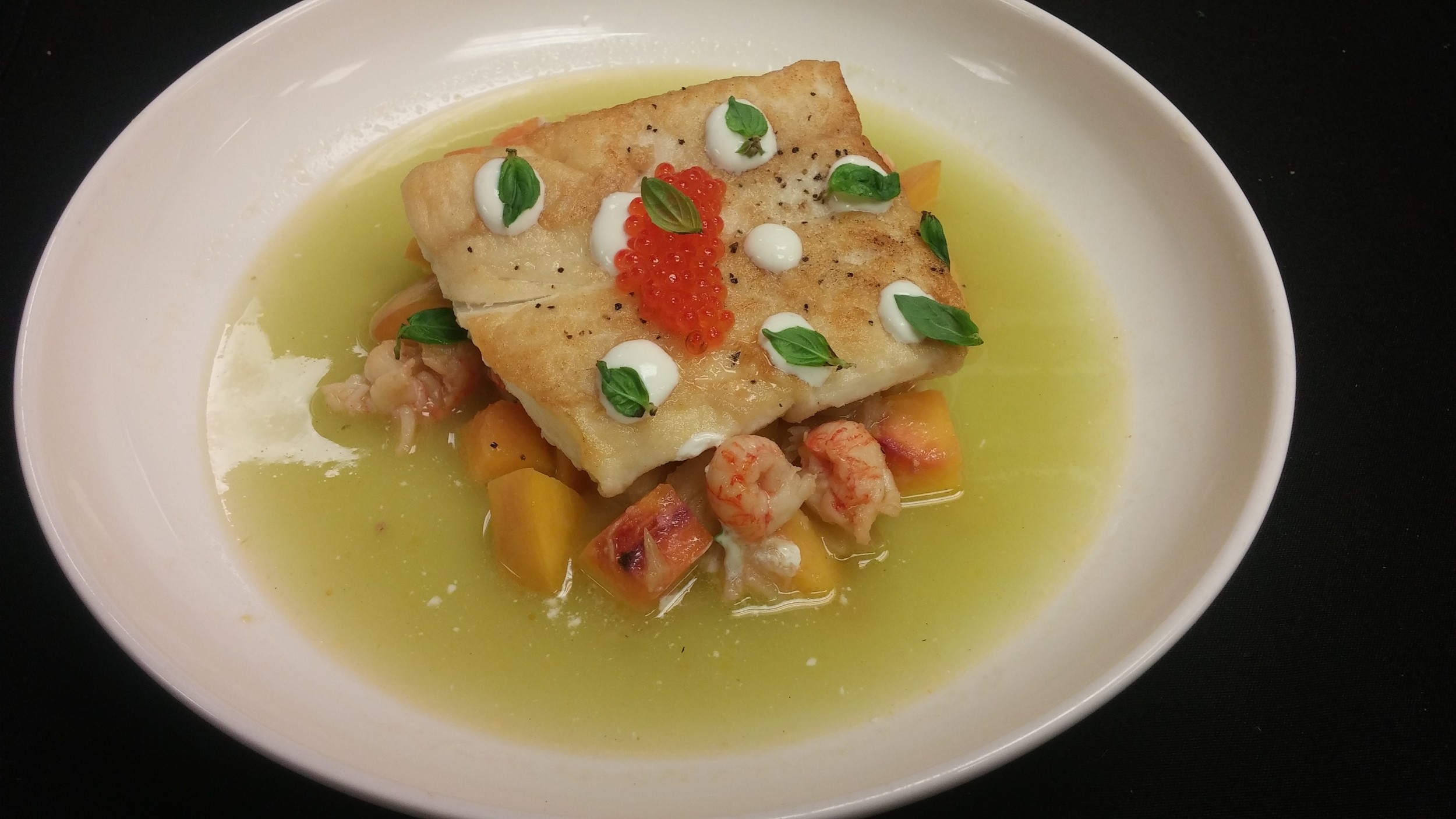
I first met Jared Chamberlain in 2010, the year he joined Bodean’s Seafood Restaurant as Chef de Cuisine. I took an immediate liking to him, thanks to his big, friendly smile and contagious laugh. But I was particularly impressed by his take on food preparation: less is more, freshness is key, and pretentiousness has no place on the plate.
Jared’s roots in the restaurant biz go way back. His mother, Debbie Higgs, operated Route 66 Diner, and it was there that Jared became acquainted with one of the most important tasks in any kitchen. “I washed dishes in third grade after bringing home bad grades,” he told me.
Jared was promoted (deservedly) to Executive Chef at Bodean’s in 2015. I sat down with him last week to chat about a number of things, especially his love of local ingredients.
PJ: You actually seek out local farmers for the freshest ingredients. Why is that?
JC: Taste!
PJ: So there’s a noticeable difference in the flavor of local produce?
JC: Absolutely. The flavors of locally grown fruits and vegetables are more unique and always better.
PJ: And why do you think that is?
JC: It’s because everything is picked when it’s perfectly ripe, and because local farmers seem to genuinely care about the quality of what they grow. They’re passionate about what they do, and so am I. The farmers and I have the same goal, which is the freshest, tastiest product.
PJ: You buy a lot of veggies from Southwood Farm. Have you been pleased with the produce?
JC: Oh yeah. The tomatoes in particular are delicious. Farmer Kyle (Dismukes) does a great job at growing them and picking them at just the right moment – not too early, not too late. I also love the Austrian Crescent potatoes. And the eggplant. And the cucumbers. And the squash.
PJ: What’s your favorite way of preparing most veggies?
JC: Roasted! I thinking roasting brings out the flavors of veggies in a way no other cooking method can.
PJ: And how are you using the cucumbers?
JC: Well of course we use them in salads. But what’s really cool – as cool as a cucumber, you might say – is the cucumber “water” we make and use as the base sauce for halibut. Customers love it.
Cucumber “Water”
Peel six cucumbers. Cut in half lengthwise and chop into one-inch chunks. Using the metal blade in a food processor or a blender, process on high for about two minutes. Strain the mixture through a fine-mesh strainer or colander lined with cheesecloth. Press solids to extract as much liquid (and flavor) as you can.
Use cucumber water as a refreshing drink straight up or mixed with a splash of soda, add it to gin- or vodka-based cocktails, or use it as a simple sauce, seasoned with a little salt and pepper. It’ll keep for several days in the fridge.
Paul’s Plant Pick Week 10: Three Big Bloomers for Summer
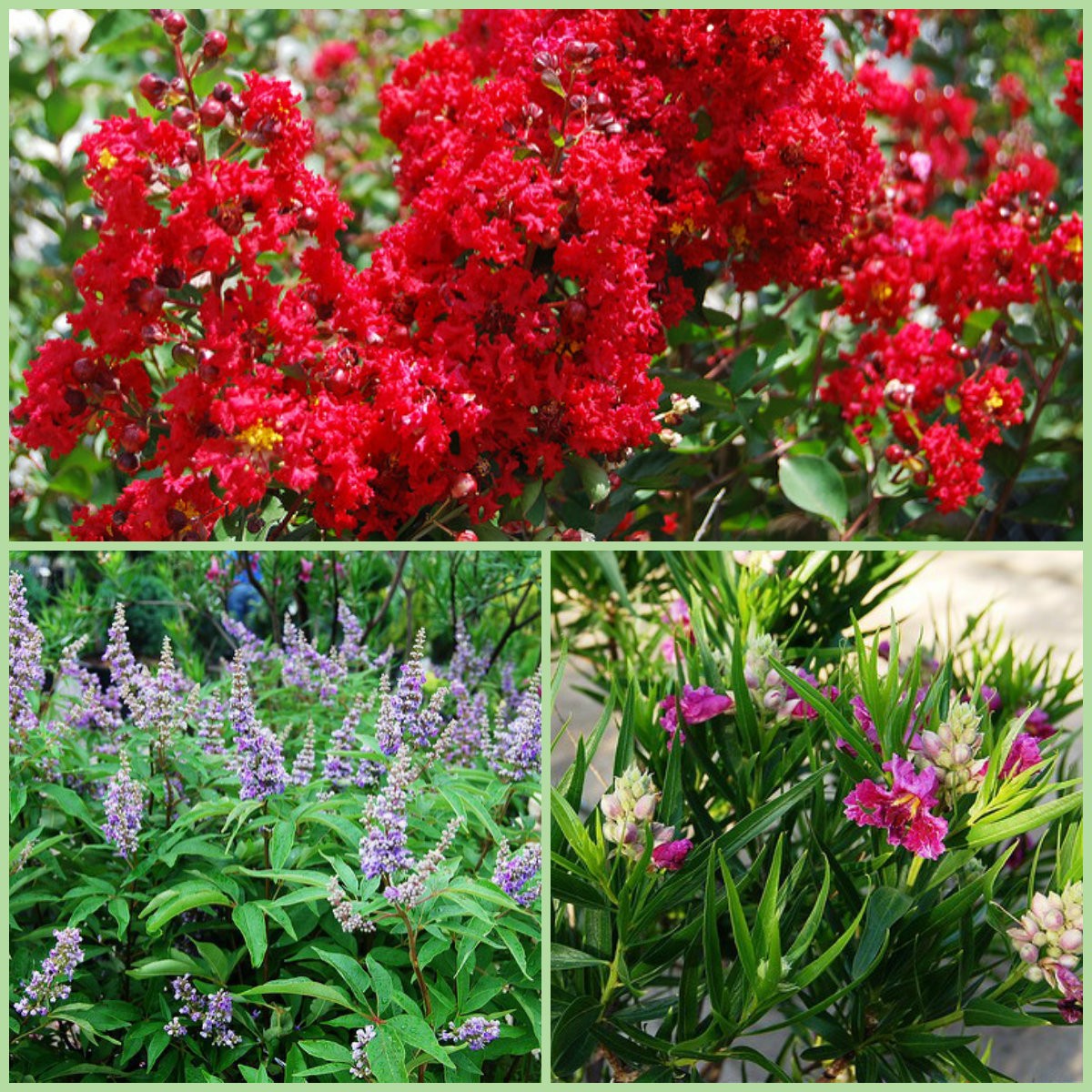
Three Big Bloomers for Summer
Funny thing about trees and shrubs: Most of them do best when planted in either spring or fall. In fact, I can’t in good faith recommend that you even consider planting most trees – and to a lesser extent, most shrubs — this time of year. Better to just wait until fall.
But there are three notable exceptions – all deciduous — and they are among my favorite plants because not only do they bloom like crazy in the intense heat of summer, they actually do best when planted in the heat of summer. And the three I speak of are Crape Myrtle, Vitex – also known as the Chaste Tree – and Desert Willow.
These three big bloomers can take all the insufferable heat and blazing sun nature throws their way, and they respond by flowering more and more, as if to say, “Is that all you’ve got?” They also root rapidly in the warm soils of summer, which is why the best time to plant them is now.
Crape Myrtle
Crape Myrtles are familiar to just about everyone, but not everyone is aware that they are available in a broad range of sizes. Not so long ago nearly all Crape Myrtles were sold as multi-trunk trees with a height of roughly 20 feet. Those trees are still available and hugely popular, but so are the shrub forms which range in height from less than two feet to around eight feet, which means you can plant a Crape Myrtle just about anywhere so long as it receives full sun.
Vitex (Chaste Tree)
Vitex is another sun lover, and it’s a pollinator magnet throughout the summer and into the fall. Most varieties grow as multi-stemmed shrubs to around ten-feet tall and wide, but they can be pruned annually for a more compact look. And you can choose plants with white, pink, or blue flowers. This is definitely an underused plant.
Desert Willow
Desert willow is a small deciduous tree native to west Texas. As the name suggests, it loves the heat. (However, it’s not a willow; it’s so named because the leaves resemble those of willows.)Large, fragrant, orchid-like flowers occur in showy clusters at the tips of the branches and on new wood from late spring to fall. It’s easy to grow but must have a well-drained site and must not be overwatered. It can be pruned to a tree or shrub, and because it blooms on new wood, the more it’s pruned, the more it flowers.
Paul’s Plant Pick Week 9: Yews
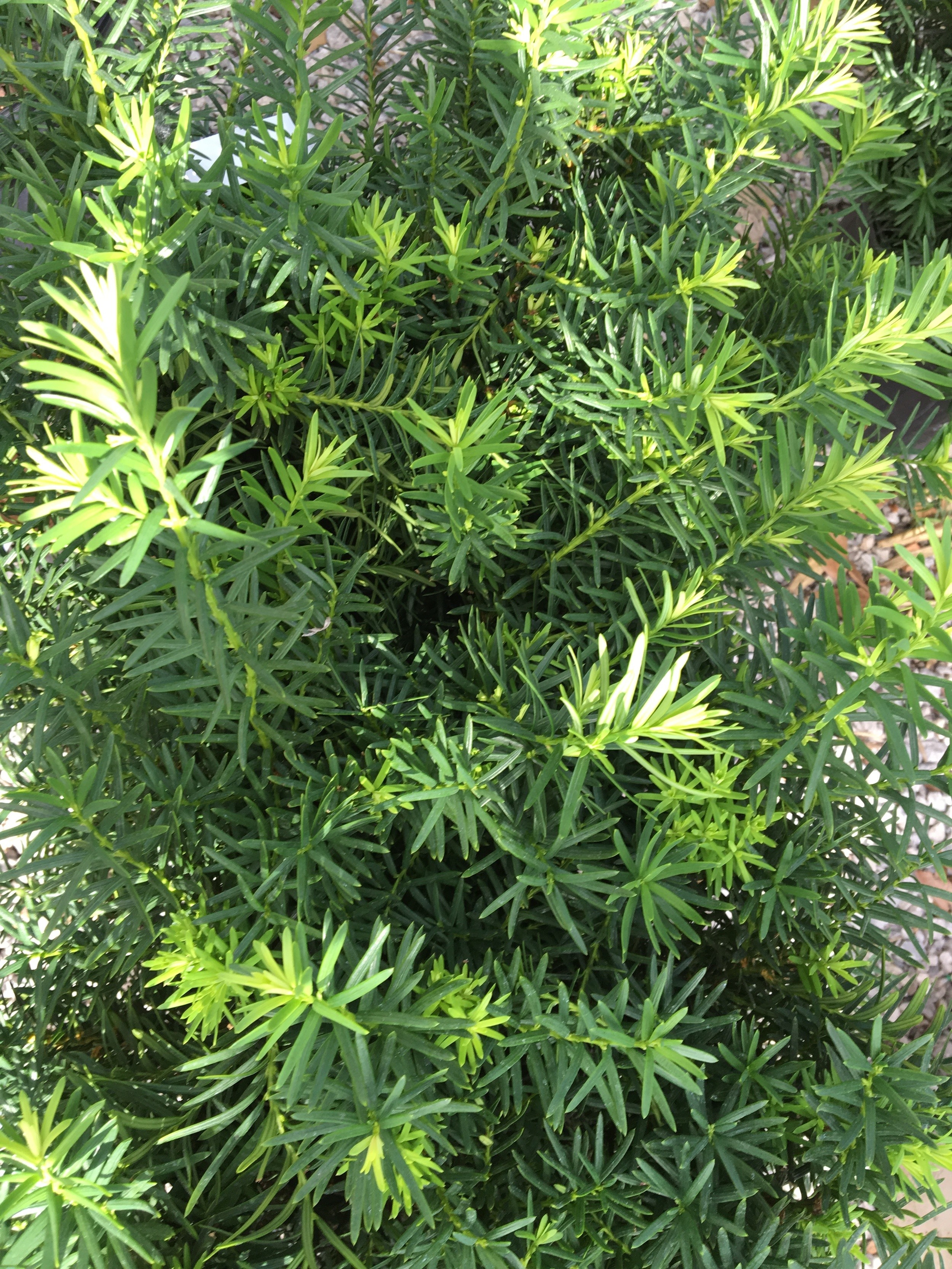
The genera Taxus and the related Cephalotaxus include the beautiful and familiar yews and the equally beautiful but less familiar plum yews, respectively. Feel free to think of them interchangeably, for the differences between them are relatively minor, and feel free to plant them in a spot that gets a few hours of morning sun followed by shade the rest of the day or receives dappled light throughout the day and has well-drained soil. Basically, plant them anywhere you might otherwise plant azaleas, because both thrive in similar conditions.
So why do I love yews? Well, let me count the ways. For starters, they’re evergreen, and I think landscapes are often woefully lacking in evergreens. They’re available in different sizes and shapes, from columnar forms (‘Capitata,’ Hicksii,’ and ‘Viridis’) to broad shrub forms (‘Densiformis’) to low, wide forms (‘Emerald Spreader’). They’re great as specimens, as shrub borders, even in mass plantings. They can be sheared again and again to keep them at whatever size and shape you want. Their new growth in spring is a gorgeous lime green, and female plants produce bright red berries in late summer to early fall. Their needles are soft. They’re bothered by few insect and disease problems (but you should inspect plants periodically for scale and mealybugs). And they’re remarkably drought tolerant once established.
And that’s why I love yews. What do yew think?
Paul’s Plant Pick Week 8: Coleus
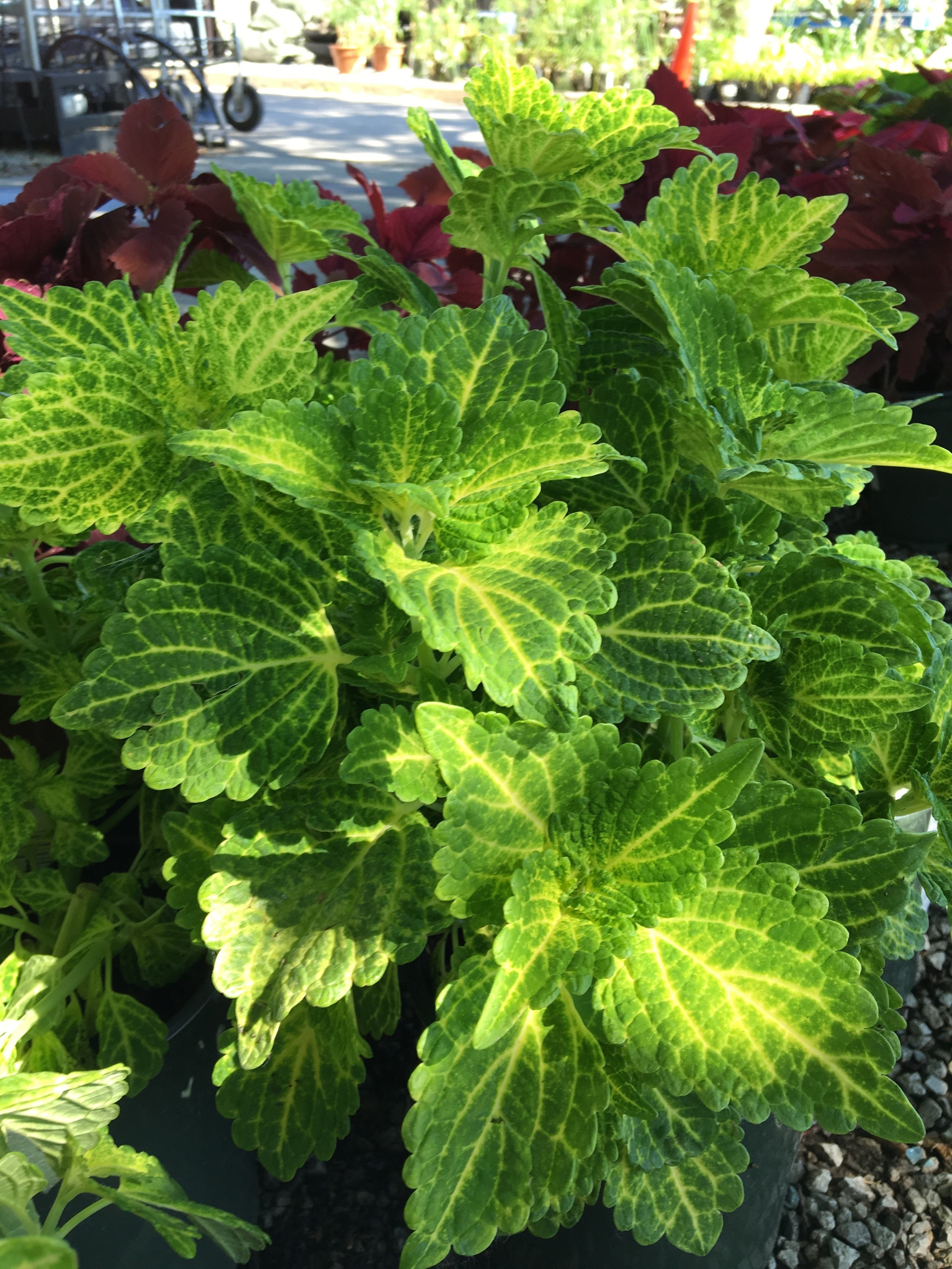
Cool, Colorful Coleus
Back in Victorian days, a sort of Coleus Fever swept through much of Europe after plant collectors returned from the tropics – especially Indonesia and Sri Lanka — with dozens of the new “it” plants. As the popularity of Coleus grew, so did the price aristocratic gardeners were willing to pay for unusual specimens. In just a few years, “The Great Coleus Race” had begun, as hybridizers and hobbyists alike rushed to create new varieties and cash in on the craze.
But the fad soon faded, and by the middle of the 20th century nearly all Coleus were grown from seed and sold as bedding plants for shady gardens. Unfortunately, most of the varieties were short in stature and quick to bolt.
A resurgence began in the 1990s, and today Coleus are among the most diverse plant group around, with amazing colors, vibrant hues, and tantalizing textures. Most grow to a height of between 18 and 30 inches, are slower to bolt, and can tolerate a good deal of sun. And they grow equally well in the ground or in containers.
I like to pinch the terminal growth of Coleus during the first few weeks after planting to encourage a bushier form, and I remove the flower stalks as they form to encourage more root and foliage development. In my experience, Coleus will tolerate a wide range of soil conditions, but they do need to be watered regularly. They’ll do fine in two to six hours of sun a day, but in a hot, west-facing spot they may wilt in the afternoon regardless how much you water them.
My favorite choice among Coleuses (yes, that’s the plural of Coleus – I looked it up) changes from year to year, but at the moment I’m partial to ‘Electric Lime.’ Aptly named, it looks as though bolts of yellow lightning are shooting through its lime-green leaves. I love it. My guess is you will too.
Paul’s Plant Picks Week 7: Ornamental Grasses
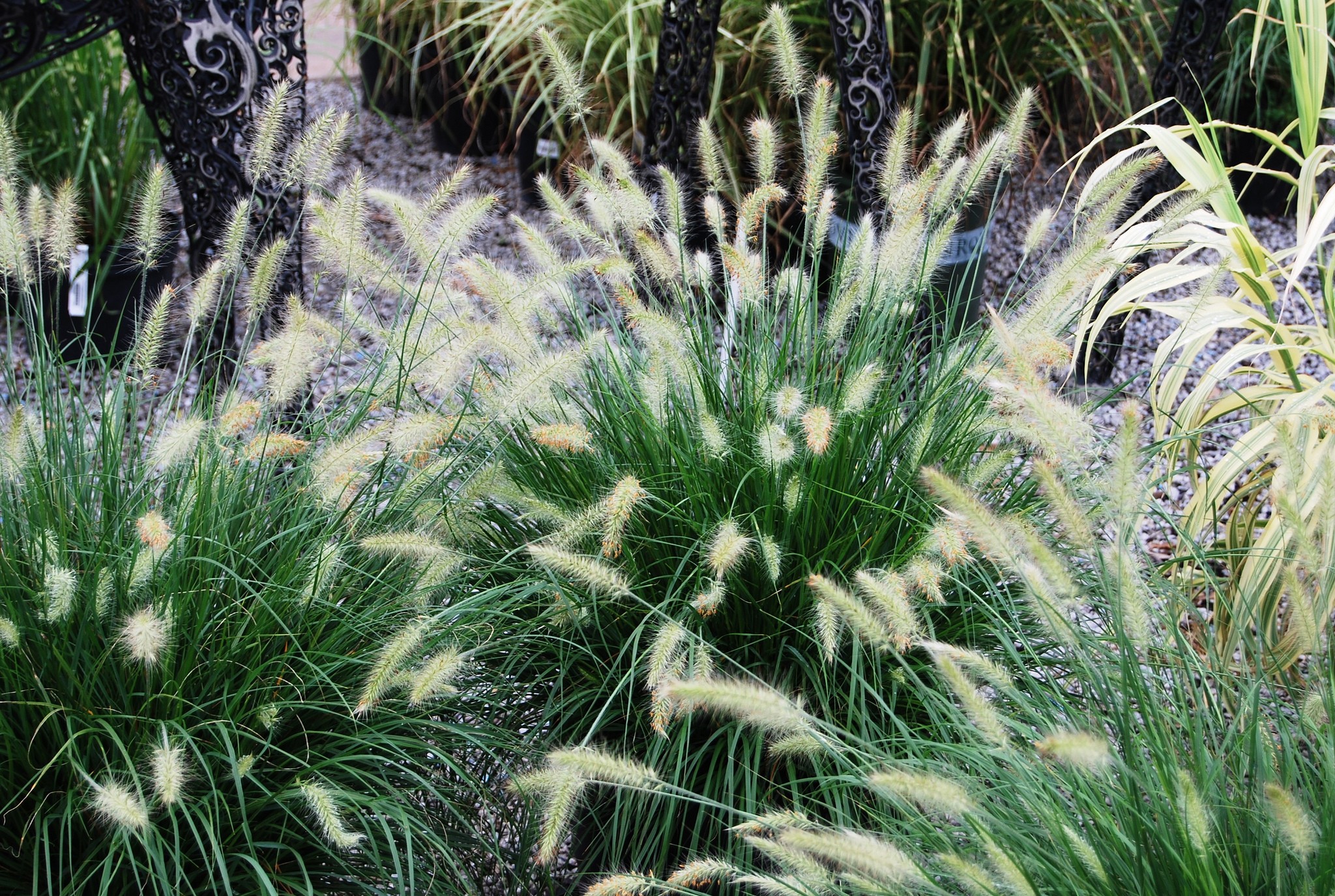
I first fell in love with ornamental grasses in the mid-80s, and my affection for them continues to this day. Not just because they’re beautiful, but also because they’re tough as nails and about as low maintenance as any plant on the planet, so much so that they practically thrive on neglect.
My first planting consisted of five, solid-green Maiden grasses (Miscanthus sinensis ‘Gracillimus’), which was about all you could find back in those days. I stuck them in the ground in May, watered them well throughout the summer and occasionally in the fall, then cut them back to about six inches the following February. That’s basically how you care for ornamental grasses – water now and then, and give them an annual haircut. Most, but not all, do best in full sun in a spot with decent soil, and I’ll let you decide whether they need fertilizer or not (I’m in the “not” camp).
Thankfully, the list of choices among ornamental grasses available these days has grown considerably. Here are a few worth considering.
Among the Maiden grasses, there are variegated forms such as ‘Adagio ‘and ‘Morning Light’, both of which tend to grow about four-feet tall and wide, and ‘Zebrinus’, which will get a foot bigger both ways.
Members of the Pennisetum or Fountain grass family are especially showy in mass plantings. ‘Hameln’ (two-feet tall and wide) and ‘Karley Rose’ (three-feet tall and wide) are two popular choices, and you can’t go wrong with either.
Panicums – the Switch grasses – are another great group. The variety ‘Northwind’ is a spectacular choice. It grows to about five-feet tall but only two-feet wide, making it what I consider a vertical masterpiece in the garden as a specimen or en masse. It also grows well in wet or boggy sites. ‘Ruby Ribbons’ is another solid choice given its namesake foliage color which appears late in the season.
Pampas grass – Cortaderia selloana – is perhaps the most popular of all the ornamental grasses in this area. And lucky for us, it’s not invasive (although in several states, notably California and Oregon, it’s considered a noxious weed). With eight-foot plumes towering above the five-foot foliage, this is a real attention getter.
Calamagrostis acutiflora, better known as ‘Karl Foerster’ Feather Reed Grass, has become hugely popular in the last decade or so, and with good reason. It grows upright, and while its foliage grows to only two-feet tall and wide, its plumes rise up to nearly six feet.
Chasmanthium latifolium – Northern Sea Oats – tolerates a good deal of shade, and while it’s beautiful with or without its distinctive seed heads, I should warn you that unlike other ornamental grasses, it’s not sterile, and has a tendency to reseed.
There are also a number of smaller grasses worth considering. Mexican Feather Grass is about as wispy as grasses get. Japanese Forest Grass is a must for shady spots. And Japanese Blood Grass offers a two-tone (red and green) color combination that’s hard to beat.
If you haven’t already discovered the world of ornamental grasses, you owe it to yourself to ponder a place in your landscape where one – or a dozen – might be just right. And if you can’t find such a spot, remember that most of them grow quite nicely in containers.
Click HERE to see images of some of Paul’s favorites!
Paul’s Plant Pick Week 6: Hostas
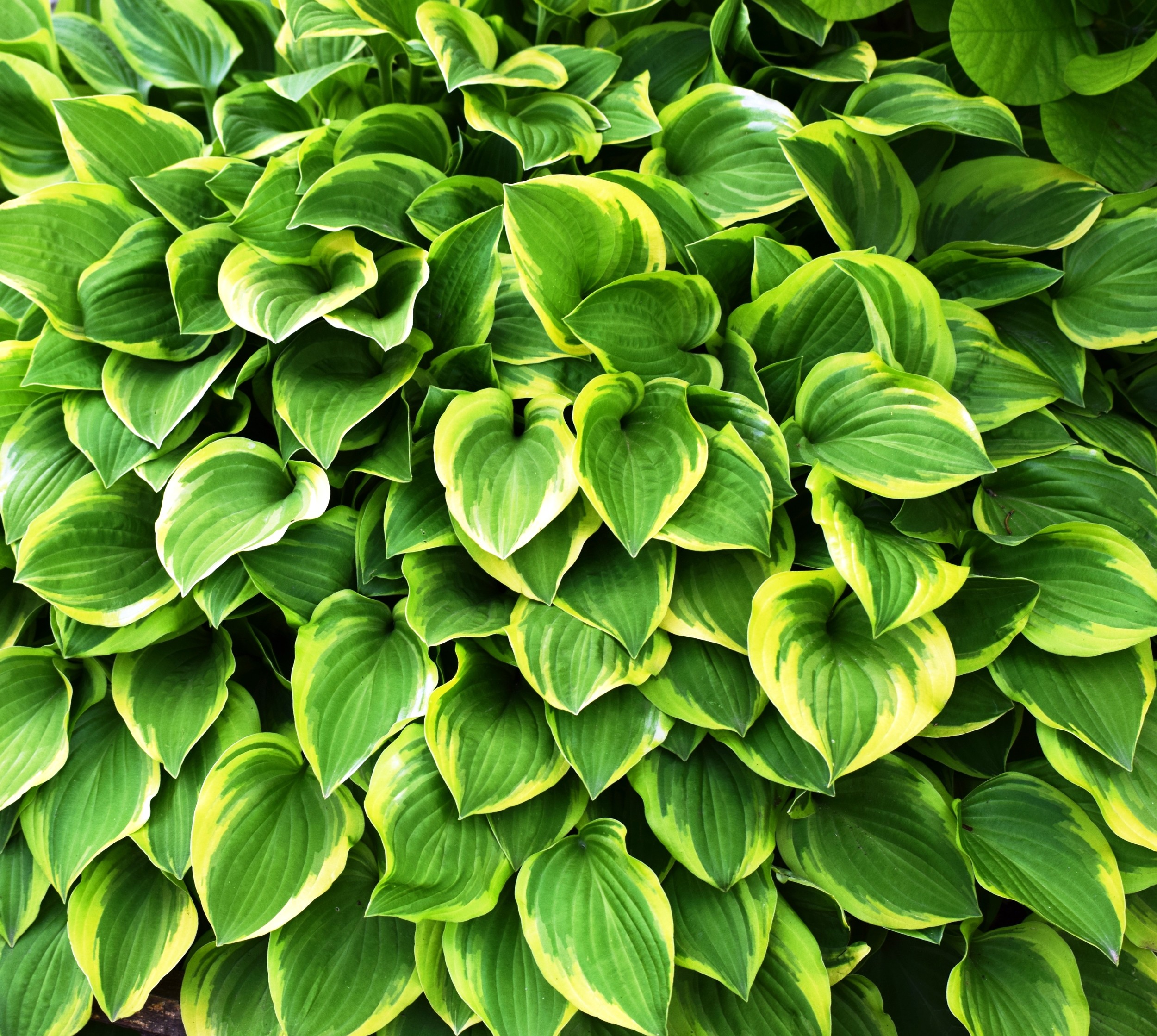
Hostas practically define shade gardening. And unlike most other plant groups, they can do it boldly or subtly, with a shout or a whisper. Want a monstrous, in-your-face hosta? Try ‘T-Rex.’ It’ll get nearly three-feet tall and six-feet wide! With 18-inch leaves, no less. At the other end of the scale there’s ‘Blue Mouse Ears,’ which grows only six-inches tall and maybe a foot wide. Having such a vast range of options is one of the things that make the genus Hosta so versatile.
Beyond size, however, is the astonishing array of color, variegation, leaf shape, and texture. I’ve always been partial to the blue hostas, but the green ones come in so many different shades of green that you’d be hard pressed to find one you didn’t like. And the variegation on the leaf margins only adds to their beauty and interest. Leaf shape varies considerably, from heart-shaped to lance-like to cupped. But leaf texture, whether smooth, veined, corrugated, or puckered, is what I find most interesting.
And let’s not forget fragrance, because the flowers of some – though not all – varieties have a heady scent that I find intoxicating. I’d describe it as a sweet, floral perfume, sort of like honeysuckle.
Hostas are native to Japan, China, and Korea, but they like it here just fine. They grow best in a rich soil that’s high in organic matter and drains well, but they can adapt to heavy soils as well. They also need fairly even moisture. But most of all, they need shade. A couple of hours of morning sun is fine, as is dappled light throughout the day, but afternoon shade is essential. Even under those conditions, hostas can become stressed in the heat of summer. Generally speaking, the blue varieties need even more shade than the green ones.
If you routinely enrich your soil with compost, you can skip the use of fertilizer. If you don’t, consider feeding your hostas twice a year – once in early spring and again when flowers begin to form. Go light on the phosphorous and potassium, and a little heavier on the nitrogen.
The bane of hosta lovers are slugs, for they can decimate a plant in no time. I’ve tried every home remedy imaginable, from beer traps to salt, but Sluggo, a product made of iron phosphate, works great for me.
Finally, lest you think plant geeks lack a sense of humor, consider the names of hosta varieties. There’s Guacamole (and its progeny, Avocado), Captain Kirk, Humpback Whale, Popcorn, and Abiqua Drinking Gourd. Strangely, however, no one has come with the obvious – Hosta La Vista, Baby!
Fun Factoid: The genus Hosta was named in 1812 in honor of the Austrian botanist Nicholas Thomas Host. Apparently no one bothered to tell that to German botanist Kurt Sprengel, who in 1817 named the plant Funkia in honor of his friend Heinrich Funk. If we could turn back the hands of time, I’d vote for Funkia any day of the week.
Paul’s Plant Pick: Week 5 Succulents
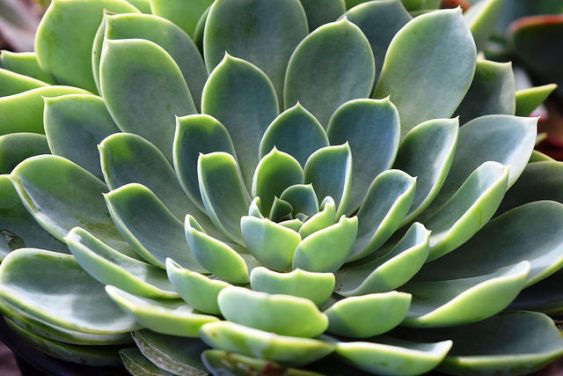
I could easily rattle off a dozen or more reasons why I like succulents so much – their rich diversity, mind-blowing colors and textures, ease of care, and so on – but what I like best about them is they’re just plain cool. And funky. And in some cases downright bizarre.
Succulents are native to arid regions all around the world, including the United States. Botanically speaking, all cacti are succulents, but not all succulents are cacti. Nevertheless, they all share the ability to store water in their fleshy leaves and stems, a trait that makes them extremely drought tolerant.
They’re also among the easiest plants to grow, which is to say they’re difficult to kill unless you overwater them. They grow in poor soils. They don’t need fertilizer. They don’t need to be pruned. And they’re rarely bothered by pests or diseases. About the only thing easier to grow are plastic plants (and we have plenty of plastic succulents available that look remarkably like the real thing!).
Most succulents are grown as houseplants, but there are several that are perfectly hardy and dependable perennials in our area such as Hens and Chicks, Sedums, and Yucca. Most succulents are also easy to propagate: just stick a leaf on top of the potting mix and it’ll root in no time. And most succulents will grow well in average household light. I overwinter mine on the shelf of a bay window that never gets direct light and they do just fine.
The real trick to keeping succulents healthy and happy, especially during the winter months, is to let them dry thoroughly between waterings. I generally water mine once a month in winter.
You can grow succulents in just about any container, from the traditional to the unusual. At one of our recent Planting Bar classes, a woman showed up with an old, rusty toolbox and proceeded to fill it with succulents. It looked great!
Fun Factoid: Asparagus is a succulent. And when roasted with olive oil, salt and pepper, and a squeeze of lemon, the taste is truly, well, succulent!
Paul’s Plant Pick Week 4: Japanese Snowbell

Twenty-five or so years ago, I planted a tree that at the time I’d never heard of, let alone seen growing anywhere around Tulsa. It was a Japanese Snowbell, known botanically as Styrax japonicus. I treated it as an understory tree, sticking it in a spot that received dappled light all day thanks to a twisted, strangely contorted old hackberry that looked like it belonged in a scene of The Hobbit.
That was in November, as I recall. The following spring, the tree’s small, glossy, medium green leaves emerged, and I was impressed by its overall look and form – open, airy, with branches more horizontal than vertical and a rounded crown. But I wasn’t prepared for what happened next. In early May, seemingly overnight, my Snowbell was covered with pendulous clusters of bell-shaped, mildly fragrant, waxy white flowers. Hundreds of them! I immediately fell in love with my Snowbell, and my affection hasn’t waned in the years since.
The gorgeous flowers (which bees love) give way to greenish-brown drupes (fancy, but technically correctword for fruits) that look like little olives. Fall color is nothing to write home about (leaves turn a pale yellow), but in time the gray bark develops fissures that reveal a beautiful orange inner bark.
Japanese Snowbell can take a fair amount of sun, but a spot that gets afternoon shade is best. It also does well in dappled light throughout the day. It’ll ultimately reach 25-feet tall and wide, but that’ll take at least a decade, maybe even two. And for what it’s worth, after 15 years, mine was only 10-feet tall and wide. Here’s one more thing to keep in mind: Japanese Snowbell has no known pest or disease problems, and isn’t all that finicky about soil type.Small trees with a long list of attributes are hard to come by. The Japanese Snowbell is perhaps the best of the lot.
Paul’s Plant Picks: Week 2 Japanese Maples
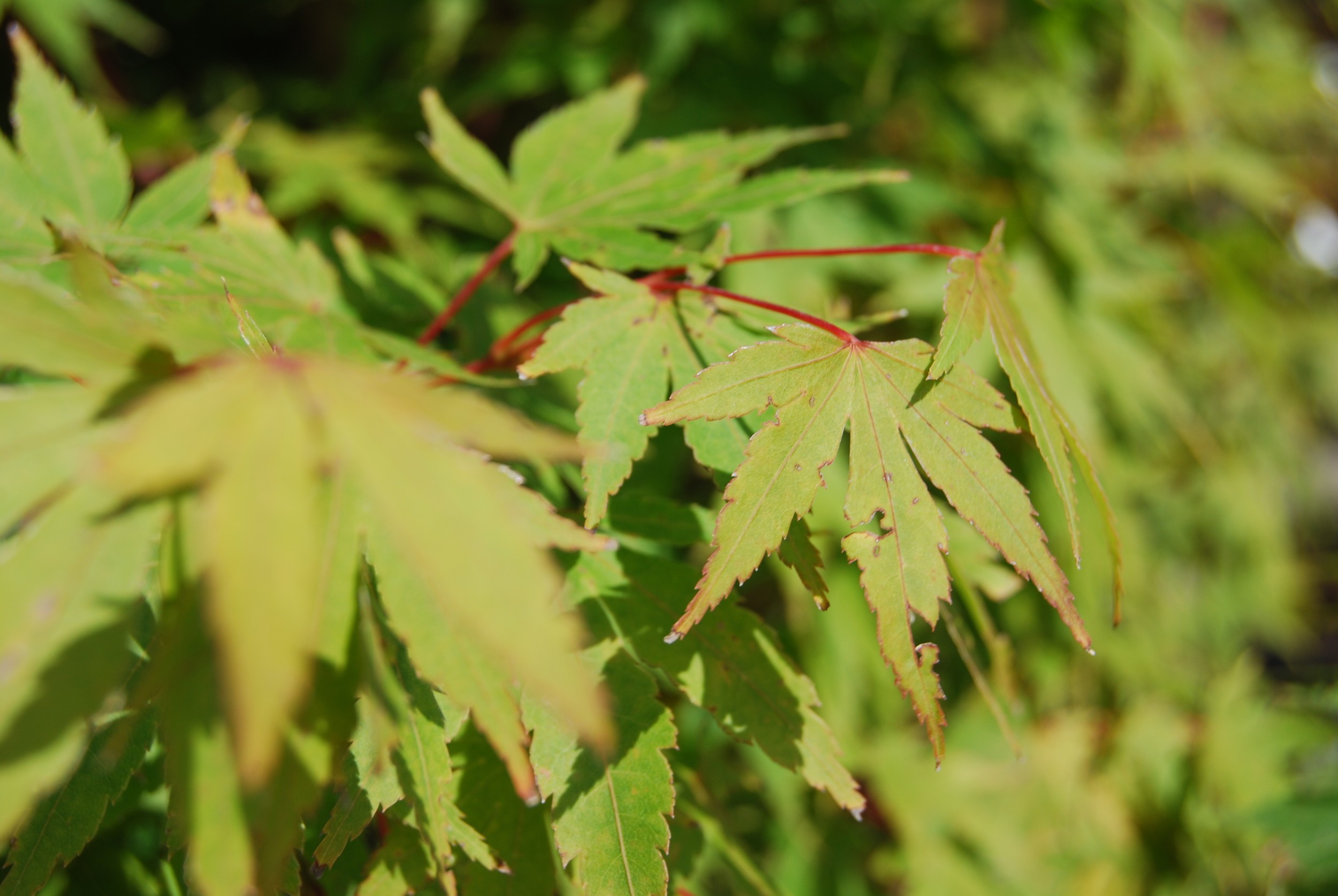
To paraphrase Will Rogers, I never met a Japanese maple I didn’t like. After all, few trees evoke a sense of tranquility the way Japanese maples do. And few trees light up a landscape the way they do, regardless of leaf shape or color. What’s more, they’re small trees – rarely growing to more than 25’ – and they’re slow growers, making them ideal for small gardens.
Generally speaking, Japanese maples are divided into two distinct leaf shapes: palmatums (from the Latin, shaped like a hand) and dissectums (finely dissected). The latter are also known as lace-leaf maples. Both groups have red and green selections and are available in a range of sizes. They’re further divided into two distinct forms: uprights and weepers.
Despite their fragile appearance, Japanese maples are tough and easy to grow, assuming they’re planted in the right spot. First and foremost, that means a shady spot, ideally on the north or east side of your landscape, or in an area that gets filtered light throughout the day. The red-leaf varieties will color up best if they receive a few hours of morning sun, while the green-leaf varieties can handle pure shade. Dissectum varieties, regardless of color, need more shade than palmatum varieties. And among the palmatum varieties, there are some reds that can handle more sun than others.
(Still with me? Good. The hard part is over.)
In a perfect world, all Japanese maples would be planted in a slightly acidic, well-drained soil enriched with a good deal of organic matter. If that describes your soil, then do yourself a favor and never, ever move. Unfortunately, most of us are forced to deal with soil that falls short of perfect. But fear not. Japanese maples are actually quite adaptable, so long as the soil drains well. That’s the most important consideration.
All Japanese maples make outstanding specimen trees in the landscape, whether upright forms or weepers. They also look great in groups, with a mix of red and green varieties or uprights and weepers. The upright reds combine well with a number of plants, but I especially like the look of Japanese Forest Grass (Hakonechloa) planted at the base of the trees. The green varieties contrast beautifully with Mondo Grass (Ophiopogon), especially the slow-growing but gorgeous black variety. Japanese maples also do quite well in containers for dressing up a porch, patio, or courtyard, and they’re hugely popular among bonsai enthusiasts.
If you forced me to pick a favorite Japanese maple, I’d have to say it’s the Full Moon, known botanically as Acer japonicum ‘Aconitifolium.’ It has an awesome, open growth form, which is to say you can see through it. That’s a great trait, because it allows you to plant in front of a window but still see the view beyond. Its deeply lobed leaves emerge light green in spring, and turn an amazing crimson in fall. Its ultimate height is maybe 18’ in as many years, although around here I’ve never seen one grow to more than about 12’.
Other favorites, at least among those that are readily available, include the following:
Coral Bark – As the name implies, the bark of this beauty is a beautiful coral color that really stands out in winter. Its deeply cut green leaves turn golden in fall. Gets 15’ tall and wide.
Red Dragon – A great weeper with spectacular blood-red foliage, and it holds its color well even in our summer heat. Grows slowly to 12’ tall and wide.
Viridis – An equally great green weeper with terrific fall color (orange and yellow, with shades of scarlet). Ultimately grows to roughly 8’ tall and wide.
Fireglow – Hugely popular upright red form that tops out at around 12’ (okay, maybe 15’ in time).
Emperor – Another nice red upright form that’ll grow to 15’.
Osakakuzi – Maybe 20’ by 20’ in time. Leaves appear green, then turn crimson in fall.
Katsura – In a word, amazing. Leaves are yellow-orange in spring, green in summer, then yellow-orange again in fall. Grows to about 10’.
Shaina – Only 6’ to 8’ at maturity, this maple is great for containers and courtyards. Leaves emerge bright red, then turn dark crimson.
Got a favorite Japanese maple that’s not on my admittedly short list? Click on comments and tell me all about it.
Photo Gallery: Click on each photo for a description or visit on flickr for additional details: https://flic.kr/s/aHskxv8ZpN